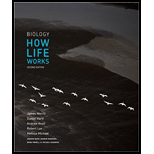
To determine:
Whether inner cell mass or one from ectoderm has more potential.
Introduction:
Embryonic development is also known as embryogenesis, it is the process in which embryo is formed and developed. It is initiated by fertilization where ovum is fertilized by a sperm cell. Embryo is a group of cell. Inner cell mass is the stack of cells present in primitive embryo called blastocyst. When embryo is inseminate it will develope into fetus. Ectoderm is the primary germ layer in primitive embryo it is developed from the outer layer of germ cells.
Explanation of Solution
Cells from inner cell mass blastocyst is more efficient in development and has more development potential than cells of ectoderm. As the cells from inner cell mass are non differentiated cells when they follow certain development pathway genes are not turned off. So reduction of genes does not occur.
Undifferentiated cells never omit their DNA that is why their developmental potential is very high. Whereas if we talk about cells of ectoderm they are differentiated cells their genes get turned off and reduction of genes takes place. They omit their DNA after differentiation that’s why their development potential is very low.
It is found that Cells from inner cell mass blastocyst is more efficient in development rather than cells of ectoderm because ectoderms are differentiated cells they loss their genetic material after differentiation.
Want to see more full solutions like this?
Chapter 20 Solutions
Biology: How Life Works - Standalone book
 Human Anatomy & Physiology (11th Edition)BiologyISBN:9780134580999Author:Elaine N. Marieb, Katja N. HoehnPublisher:PEARSON
Human Anatomy & Physiology (11th Edition)BiologyISBN:9780134580999Author:Elaine N. Marieb, Katja N. HoehnPublisher:PEARSON Biology 2eBiologyISBN:9781947172517Author:Matthew Douglas, Jung Choi, Mary Ann ClarkPublisher:OpenStax
Biology 2eBiologyISBN:9781947172517Author:Matthew Douglas, Jung Choi, Mary Ann ClarkPublisher:OpenStax Anatomy & PhysiologyBiologyISBN:9781259398629Author:McKinley, Michael P., O'loughlin, Valerie Dean, Bidle, Theresa StouterPublisher:Mcgraw Hill Education,
Anatomy & PhysiologyBiologyISBN:9781259398629Author:McKinley, Michael P., O'loughlin, Valerie Dean, Bidle, Theresa StouterPublisher:Mcgraw Hill Education, Molecular Biology of the Cell (Sixth Edition)BiologyISBN:9780815344322Author:Bruce Alberts, Alexander D. Johnson, Julian Lewis, David Morgan, Martin Raff, Keith Roberts, Peter WalterPublisher:W. W. Norton & Company
Molecular Biology of the Cell (Sixth Edition)BiologyISBN:9780815344322Author:Bruce Alberts, Alexander D. Johnson, Julian Lewis, David Morgan, Martin Raff, Keith Roberts, Peter WalterPublisher:W. W. Norton & Company Laboratory Manual For Human Anatomy & PhysiologyBiologyISBN:9781260159363Author:Martin, Terry R., Prentice-craver, CynthiaPublisher:McGraw-Hill Publishing Co.
Laboratory Manual For Human Anatomy & PhysiologyBiologyISBN:9781260159363Author:Martin, Terry R., Prentice-craver, CynthiaPublisher:McGraw-Hill Publishing Co. Inquiry Into Life (16th Edition)BiologyISBN:9781260231700Author:Sylvia S. Mader, Michael WindelspechtPublisher:McGraw Hill Education
Inquiry Into Life (16th Edition)BiologyISBN:9781260231700Author:Sylvia S. Mader, Michael WindelspechtPublisher:McGraw Hill Education





